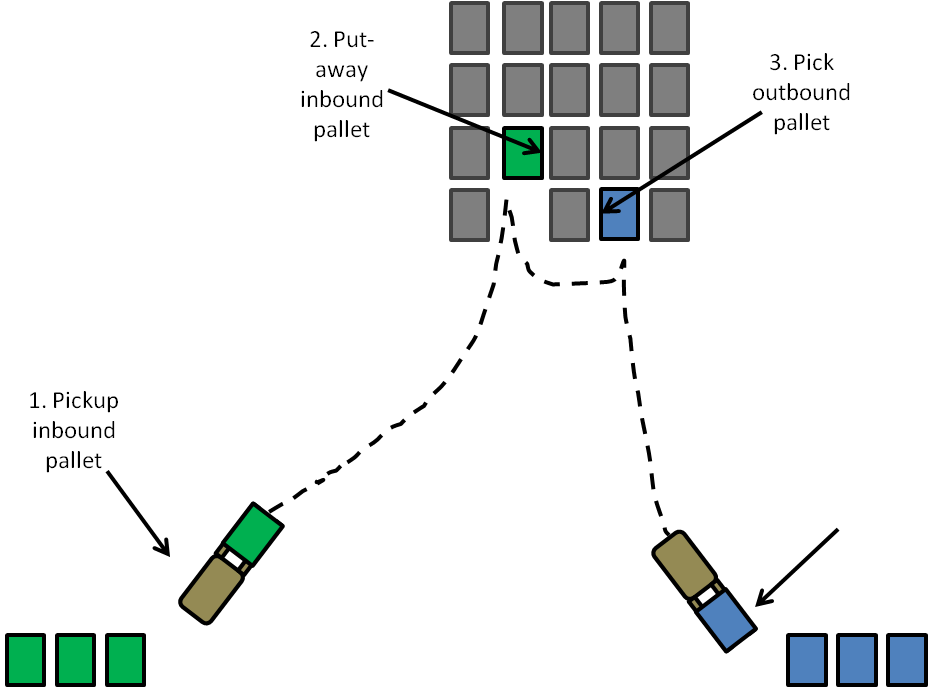 By Ian Hobkirk
By Ian Hobkirk
Managing Director of Commonwealth Supply Chain Advisors
A major part of effectively managing a fleet of over-the-road trucks is maximizing the potential for back-hauls. The concept is simple: a truck that leaves the plant full but returns empty is only 50% utilized.
While this concept is well-known in the world of transportation, a similar situation exists in the warehouse that is more rarely capitalized on. In distribution centers that primarily handle full pallets of goods, lift trucks are often severely under-utilized. In most cases, the sequence in which work is performed is dictated by events: a truck of product arrives, or an order needs to be picked. As a result, when that inbound load is ready to be put away, an operator will work exclusively on that load, putting the pallets away one at a time until complete. He picks up a pallet in the dock area, drives often a great distance to an open location in the rack, puts the pallet away, and then drives back – with forks empty – to the dock area. While the inbound load may get put away quickly, only about 50% of the worker’s time is productive. The same situation holds true for outbound processes: a worker often picks an entire outbound truckload of pallets, going back and forth from the dock area with his forks empty half of the time.
A concept called “task interleaving” is the remedy to this inefficient situation. With task interleaving, the Warehouse Management Software (WMS) build queues of work tasks for both inbound and outbound workflows. These tasks can be executed independently of the larger work group they are in (i.e. all of the pallets on an inbound load don’t have to be put away in sequence). The WMS also maintains a virtual map of the warehouse, understanding each bin’s position in proximity to the other bins. Then, the WMS looks for pairs of tasks which are tied to bins in the storage system that are in close proximity to each other. As Figure 1 shows, the system then directs a worker to (1) pick up an inbound pallet, (2) put it away in the rack, (3) pick an outbound pallet from an adjacent bin location and (4) transport it to the dock area. Between the two tasks, the forklift is almost continuously carrying a load, and the worker is almost twice as productive.
Figure 1: How Task Interleaving Works
The potential for significant efficiency gains in certain operations is obvious. Attaining the functionality is not always easy, however. Task-interleaving usually can’t be just “added on” to an existing WMS that doesn’t support it. The WMS literally must think about work in the DC in new ways – rather than being event-based (i.e. a truck arrives), tasks must be grouped around bin proximity. Not all WMS systems are capable of directing work in this way without significant re-architecting. However, the potential for efficiency gains can be so great with task interleaving, that some companies have found that this is the catalyst that is needed to cost justify a complete WMS replacement.
Related Reading:
Whitepaper: Selecting the Right WMS

